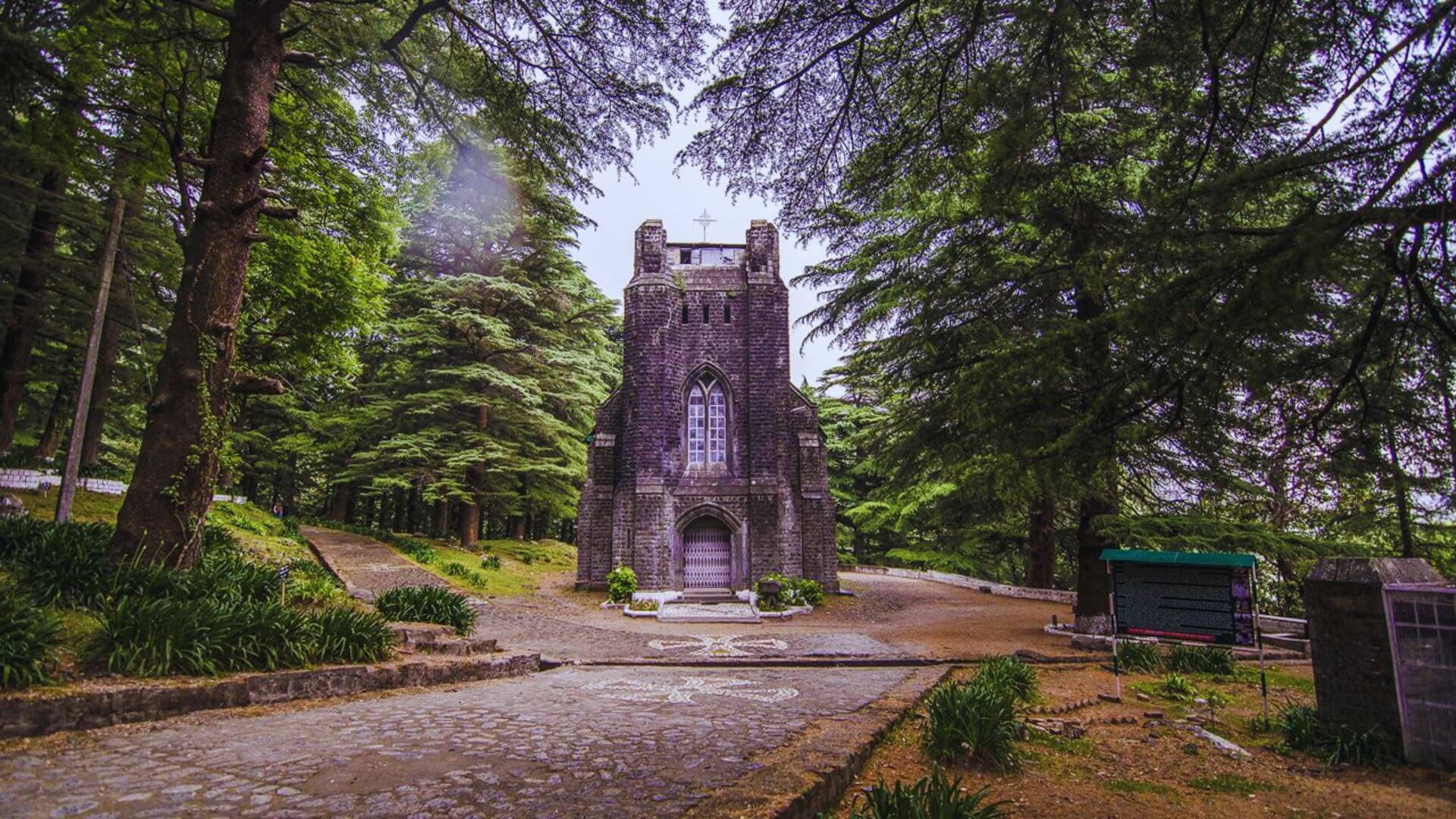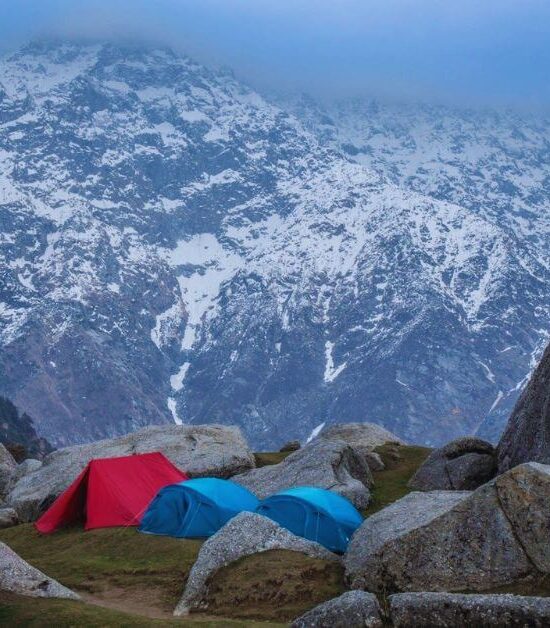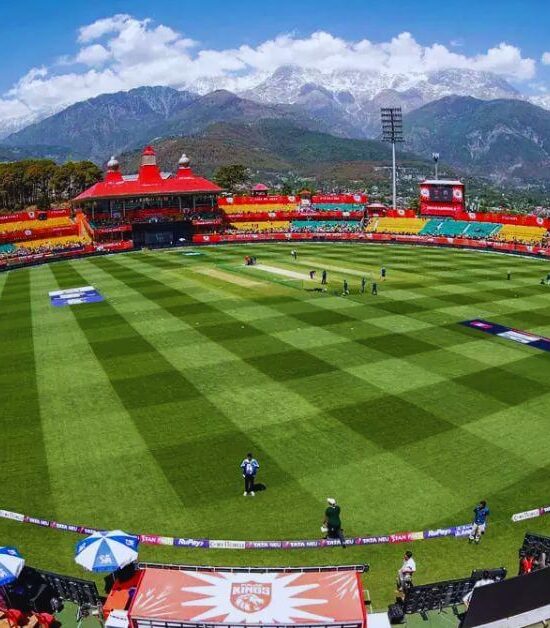Have Any Questions?
+91-83529-58000

St. John in the Wilderness Church (Dharamshala): A Journey Through Time – The History & Architecture
If you’re traveling to Dharamshala or McLeod Ganj, you might be drawn by the majestic mountains or Tibetan monasteries. But tucked quietly between the hills is a colonial-era gem that deserves your attention — St. John in the Wilderness Church (Dharamshala).
This 19th-century Anglican church is a peaceful retreat into history, nature, and spirituality. Whether you’re a lover of architecture or just want a serene place to reflect, this hidden spot offers a magical blend of both.
🕰️ A Glimpse Into History: Built in 1852

St. John in the Wilderness Church (Dharamshala) was built in 1852, making it one of the oldest churches in North India. During British rule, Dharamshala served as a summer retreat for officers and their families. The cool climate and pine forests reminded them of home, and soon, churches, schools, and colonial-style homes started popping up.
Named after John the Baptist, the church was called “in the wilderness” due to its serene, forested location — far from the hustle and bustle even back then.
🛕 Surviving the 1905 Earthquake
In 1905, a devastating earthquake hit the Kangra region, killing over 20,000 people and destroying most structures in the area.
Remarkably, St. John in the Wilderness Church (Dharamshala) survived, though its bell tower collapsed. The main structure remained intact — a testament to the strength of its design and materials. The church’s resilience became symbolic of the community’s spirit and faith.
📌 Did You Know? The new bell was later imported from England and is still in use today.
🏰 The Architecture: Gothic Revival Amidst Deodar Trees

The church is a classic example of Neo-Gothic or Gothic Revival architecture, with pointed arches, tall narrow windows, and grey stone walls that blend seamlessly into the forest around it.
Highlights of the Design:
- Stained Glass Windows: Designed by John Lockwood Kipling (father of famous author Rudyard Kipling), these windows depict biblical scenes in vibrant colors.
- Stone Exteriors: Locally sourced stone and lime mortar were used to ensure the building blended with its natural surroundings.
- Wooden Interior: Inside, the pews and altar are made of richly polished cedarwood, adding warmth and elegance to the otherwise somber Gothic design.
It’s not just a church — it’s a piece of art built to last centuries.
⚰️ The Final Resting Place of Lord Elgin
One of the most significant historical facts about this church is that it houses the grave of Lord Elgin, the Governor-General and Viceroy of India in the 1860s.
He died suddenly while on vacation in Dharamshala in 1863 and was buried in the church cemetery — making this spot of global historical significance. His tombstone is still well preserved and can be visited by tourists.
🎯 Tip: Don’t miss the chance to explore the small but meaningful graveyard behind the church. Each headstone has a story.
🌿 A Spiritual Escape Surrounded by Nature

Located between McLeod Ganj and Forsyth Ganj, the church sits peacefully among towering cedar and deodar trees. The cool mountain breeze, rustling leaves, and distant birdsong create a tranquil, meditative atmosphere.
Visitors often come here not just for history or sightseeing, but for reflection, silence, and soul-searching. It’s a popular stop for:
- Nature lovers
- Spiritual seekers
- Photographers
- History enthusiasts
- Architecture students
📍 How to Reach St. John in the Wilderness Church (Dharamshala)

| Mode | Details |
|---|---|
| By Air | Nearest Airport: Kangra Airport (DHM), 18 km away |
| By Road | 8 km from Dharamshala, accessible via local taxis or buses |
| On Foot | A 15-20 minute scenic walk from McLeod Ganj town center |
The location makes it easy to combine your visit with nearby attractions like:
Bhagsu Waterfall
Dalai Lama Temple
McLeod Ganj Market
Namgyal Monastery
Recent Blog Posts
Best Offbeat Treks Near Dharamshala: Escape the Crowds & Explore the Wild
Triund vs. Kareri Lake Trek: Which One Should You Choose?
Punjab Kings vs Delhi Capitals: A Clash of Power, Passion, and Playoff Dreams.
Triund Trek for Beginners: Your Complete Guide to the Easiest Himalayan Hike in Dharamshala
Dharamshala Cricket Stadium: IPL 2025 Upcoming Matches, Events & Best Places to Stay – A Guide by D’Polo Club & Spa Resort
🕒 Timings & Entry
Open All Days: 7:00 AM – 6:00 PM
Sunday Service: Usually at 10:30 AM
Entry Fee: Free
💡 Pro Tip: Visit early morning or late afternoon for the best natural light for photography and peaceful surroundings.
📅 Best Time to Visit
| Season | What to Expect |
|---|---|
| Spring (Mar–Jun) | Cool breeze, clear skies, lush green surroundings |
| Autumn (Sep–Nov) | Post-monsoon freshness, perfect for walks |
| Winter (Dec–Feb) | Cold but beautiful with snow-dusted trees (dress warmly!) |
📸 Photography Tips
Capture the stained-glass windows from inside during midday when sunlight filters through.
Snap a wide-angle shot of the stone façade with deodar trees in the background.
Take moody, black-and-white photos of the graveyard for a hauntingly beautiful touch.
People also Ask
What is the significance of St. John in the Wilderness Church in Dharamshala?
It is one of the oldest churches in Himachal Pradesh, built in 1852, known for its Gothic architecture and as the final resting place of Lord Elgin, former Viceroy of India.
Who built St. John in the Wilderness Church?
The church was built by the British during colonial rule to serve the Christian community residing in the region.
What type of architecture is St. John in the Wilderness Church?
The church features Gothic Revival architecture, with pointed arches, stained-glass windows, and grey stone walls surrounded by deodar trees.
Is St. John in the Wilderness Church still active for worship?
Yes, regular Sunday services are held, and tourists are welcome to attend respectfully.
What happened to the church during the 1905 Kangra earthquake?
The bell tower was destroyed, but the main structure survived — making it one of the few colonial-era buildings that withstood the disaster.
Can tourists visit Lord Elgin’s tomb at the church?
Yes, visitors can see Lord Elgin’s grave in the church cemetery, which is a popular historical site within the premises.
Is photography allowed inside St. John in the Wilderness Church?
Photography is generally allowed, especially of the stained-glass windows and architecture, but discretion is advised during prayer times.
How do I reach St. John in the Wilderness Church from McLeod Ganj?
The church is a 15–20 minute walk from McLeod Ganj town center or a 5-minute drive by taxi or auto-rickshaw.
What is the best time of year to visit St. John in the Wilderness?
The ideal time is from March to June and September to November, when the weather is pleasant, and the forest surroundings are lush and green.
Are there other attractions near St. John in the Wilderness Church?
Yes, nearby attractions include the Dalai Lama Temple, Bhagsu Waterfall, Namgyal Monastery, and McLeod Ganj Market — all within a short distance.
Feedback







